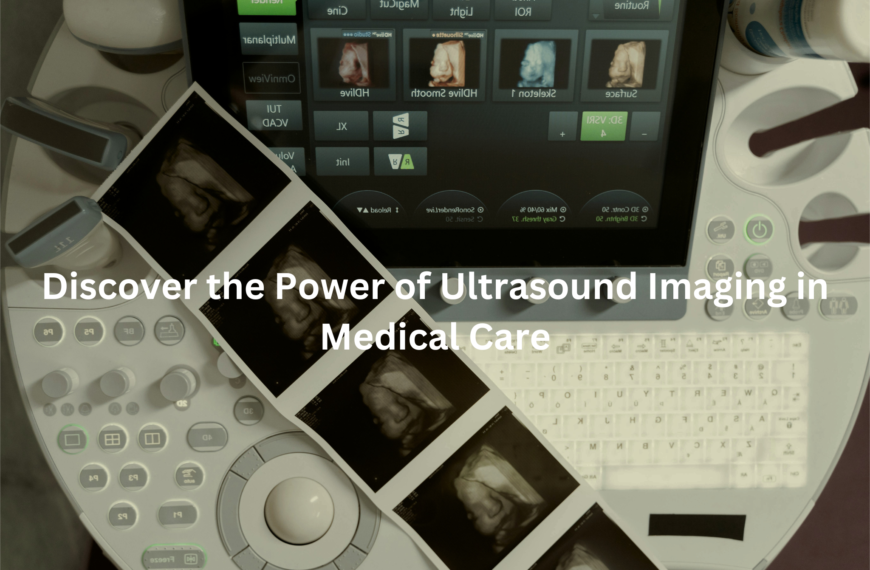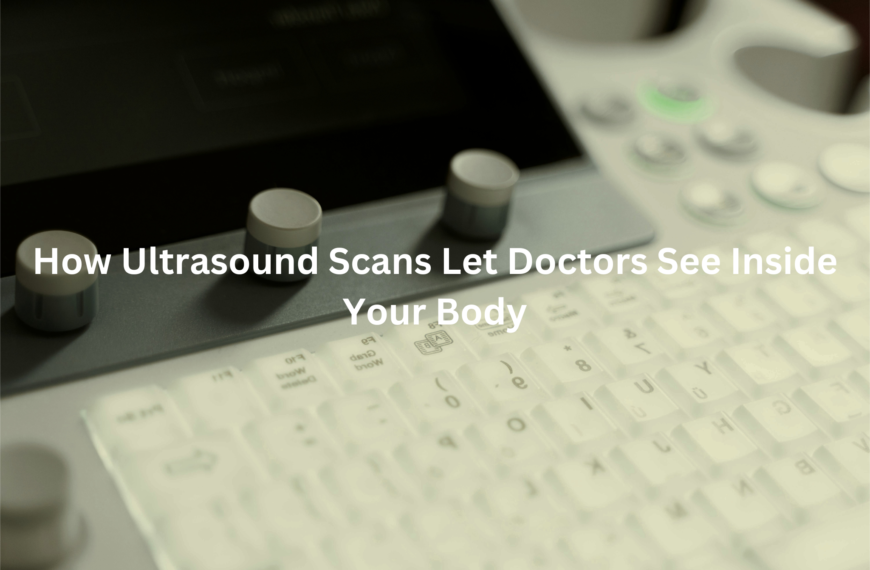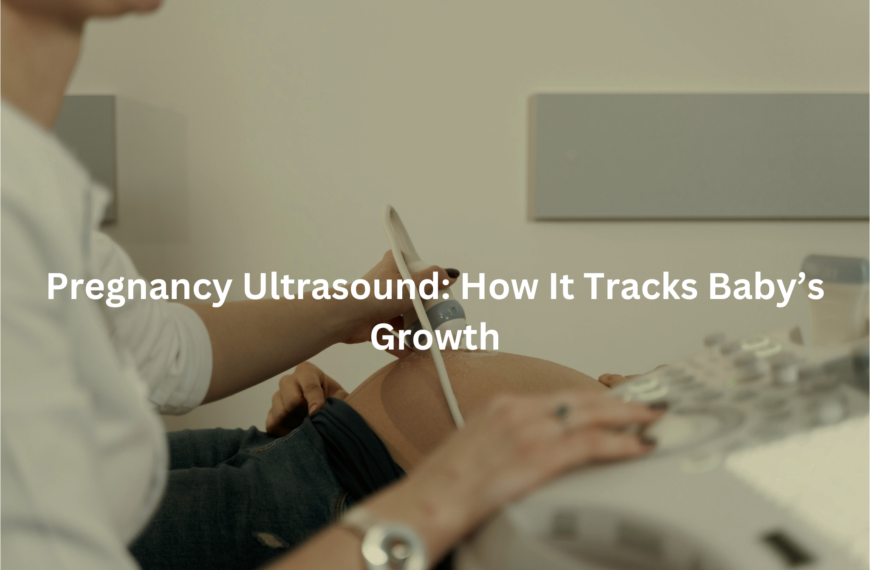Learn how abdominal ultrasounds assess organs, diagnose conditions, and help monitor your overall health.
An abdominal ultrasound is an important diagnostic tool used to visualise the organs inside your abdomen. By using high-frequency sound waves, it allows healthcare providers to examine organs like the liver, kidneys, and gallbladder.
This non-invasive procedure is essential for detecting conditions such as kidney stones, liver disease, and gallstones, making it a key part of medical assessments.
Key Takeaways
- Non-invasive and safe: Abdominal ultrasounds use no radiation, making them a safe option for regular checks.
- Diagnostic tool: Helps identify conditions like gallstones, kidney stones, and liver disease.
- Quick and efficient: The procedure is typically completed in under 30 minutes with minimal discomfort.
What is an Abdominal Ultrasound
An abdominal ultrasound is a commonly used diagnostic test that employs high-frequency sound waves to create detailed images of the organs in your abdomen. This non-invasive, painless procedure is especially helpful for examining key organs such as the liver, kidneys, gallbladder, pancreas, and spleen.
The main benefits of an abdominal ultrasound include:
- Non-invasive: No cuts or incisions are needed, making it a safer option for regular check-ups.
- Painless: The procedure is comfortable with minimal discomfort.
- Quick and efficient: Typically completed in under 30 minutes, offering real-time results.
Abdominal ultrasounds are crucial for diagnosing conditions like gallstones, kidney stones, liver disease, and tumours. This test is essential for understanding your abdominal health and guiding your healthcare provider in determining the best course of treatment or the need for further testing. (1)
How Abdominal Ultrasound Works
During an abdominal ultrasound, a small handheld device called a transducer sends high-frequency sound waves into your body. These sound waves bounce back when they hit internal structures, and the ultrasound machine converts the echoes into detailed images on a screen.
Here’s what you can expect:
- Ultrasound gel: The technician will apply gel to your abdomen to help the sound waves travel smoothly through your skin. It may feel cool or slightly sticky.
- Transducer: The technician will move the transducer across your abdomen, and you may feel some pressure as they adjust its position to capture clearer images.
If your healthcare provider needs to assess blood flow, they may use a Doppler ultrasound. This technique measures the movement of blood through vessels, helping detect any blockages or abnormalities in blood flow.
The entire process is non-invasive, quick, and usually takes less than 30 minutes.
Preparation for the Test
Before undergoing an abdominal ultrasound, some preparation is required to ensure the best results. Most notably, you’ll need to fast for about 8 hours before the procedure—no food or drinks, except for water. This helps minimise gas in your stomach and intestines, which can obscure the images of your internal organs.
Here’s what to expect:
- Fasting: No food or drink (except water) for 8 hours prior to the test.
- Clothing: Wear loose, comfortable clothing to easily expose your abdomen during the procedure.
- Ultrasound gel: The gel applied to your abdomen may feel cool or slightly sticky, but it’s harmless.
The entire process usually takes under 30 minutes. During the scan, you might be asked to hold your breath or stay still for short periods to help capture clear images. The procedure is quick and easy, so you’ll be able to carry on with your day shortly after.
Benefits and Safety
One of the key advantages of an abdominal ultrasound is that it’s non-invasive and painless. Unlike X-rays or CT scans, it doesn’t use ionising radiation, making it a safe option for routine use. This is especially beneficial for pregnant women or those requiring frequent scans to monitor ongoing health conditions.
Common uses for abdominal ultrasounds include:
- Fatty liver disease: Helps assess liver health and function.
- Kidney stones: Identifies stones or other kidney-related issues.
- Tumours and cysts: Detects abnormal growths within organs.
- Liver function: Monitors overall liver health.
Since it’s non-invasive, there’s no recovery time, so you can carry on with your day as usual after the procedure. This makes the abdominal ultrasound a convenient and safe choice for monitoring and diagnosing various abdominal conditions.
Common Uses of Abdominal Ultrasound
Abdominal ultrasounds are a valuable tool for diagnosing and monitoring various health conditions, offering detailed images of your internal organs without invasive procedures. They help identify a range of issues that may be affecting your abdominal health.
Common uses of an abdominal ultrasound include:
- Diagnosing organ conditions: Identifying problems such as cysts, tumours, or organ enlargement.
- Investigating abdominal pain: If you’re experiencing unexplained discomfort, bloating, or pain, an ultrasound can help uncover the cause.
- Monitoring blood flow: A Doppler ultrasound assesses blood flow in abdominal vessels, including the abdominal aorta, to detect blockages or abnormal circulation.
This non-invasive procedure is essential for early diagnosis and ongoing monitoring, providing your healthcare provider with the information needed to make informed decisions about your care and treatment. (2)
When is Abdominal Ultrasound Needed
Credits: 123sonography
An abdominal ultrasound is typically performed when there’s a specific medical need to assess your internal organs or diagnose a condition. It’s commonly requested if you’re experiencing unexplained abdominal pain, swelling, or discomfort. This non-invasive test provides your healthcare provider with a detailed view of what might be happening inside.
It’s also used to monitor ongoing conditions, such as:
- Kidney disease: Keeping an eye on the health and function of your kidneys.
- Fatty liver disease: Assessing liver size and condition.
- Guiding procedures: Helping with biopsies or draining fluid from the abdomen.
You won’t usually have an abdominal ultrasound as part of a regular check-up unless there’s a concern. It’s often combined with other tests, like blood tests or CT scans, to give a clearer picture of your health and assist with more accurate diagnoses and treatment decisions.
How Results are Interpreted
Once your ultrasound is done, a radiologist will examine the images and interpret the results. They’ll focus on various aspects of your abdominal organs to identify any potential issues.
They’ll assess:
- Organ size: Checking for any enlargement or shrinkage of organs.
- Abnormalities: Looking for cysts, tumours, or other unusual growths.
- Blood flow: If a Doppler ultrasound was used, they’ll measure the flow of blood through your abdominal vessels.
The ultrasound results will help your healthcare provider decide on the best course of action, whether it involves more tests, changes to your medication, or advice on lifestyle adjustments. These results provide a clearer picture of your health, allowing for informed decisions about your treatment and care.
Conclusion
Abdominal ultrasounds are a vital tool in healthcare. They’re quick, effective, and safe, with no radiation involved. Whether you’re experiencing unexplained pain, need to monitor a condition, or just want to check in, an abdominal ultrasound can provide answers.
It’s a simple procedure that won’t take long, so there’s no need to stress. When it comes to your health, it’s always best to be proactive and get the care you need.
FAQ
What is an abdominal ultrasound used for?
An abdominal ultrasound is a diagnostic test that helps healthcare providers examine the organs inside the body, such as the liver, kidneys, and gallbladder. It’s commonly used to help diagnose conditions like kidney stones, liver disease, and fatty liver disease. The test is safe and non-invasive, using sound waves to create an image of the organs and structures inside the abdomen.
How does an abdominal ultrasound work?
An abdominal ultrasound uses high-frequency sound waves to create an image of the organs inside the body. The ultrasound machine sends these sound waves through the body, and when they bounce off internal structures, they are turned into images. The test doesn’t involve any ionising radiation, making it a safer option compared to other imaging tests.
Do I need to prepare for an abdominal ultrasound?
Yes, you may need to fast for a period of time before your test. Generally, it’s important to avoid eating or drinking for a few hours before the ultrasound. This helps reduce gas in the abdomen, allowing for clearer images of the internal organs. Be sure to follow any specific instructions given by your healthcare provider.
Is an abdominal ultrasound safe?
Yes, an abdominal ultrasound is considered very safe. It uses sound waves instead of ionising radiation, so it doesn’t carry the same risks as other imaging tests like CT scans or X-rays. The procedure is non-invasive and painless, making it suitable for a wide range of people, including pregnant women.
Does the ultrasound gel feel uncomfortable?
The gel used during an abdominal ultrasound may feel cool or slightly sticky, but it’s harmless and designed to help the sound waves travel more easily through the skin. It’s a necessary part of the process to create a clear image of the organs inside the body. After the test, the gel can be wiped off easily.
How long does an abdominal ultrasound take?
An abdominal ultrasound usually takes less than 30 minutes to complete. During the test, you may be asked to hold your breath or remain still for a short period of time to help create clearer images. The procedure is quick, and there’s no long recovery time required afterward.
Are there any risks associated with an abdominal ultrasound?
No, abdominal ultrasounds are very safe and don’t use ionising radiation, unlike CT scans or X-rays. The test uses sound waves to create images, so there are no known risks. It’s a non-invasive procedure that doesn’t cause pain or require any recovery time.
Can an abdominal ultrasound detect conditions like liver disease?
Yes, an abdominal ultrasound is often used to help diagnose liver disease, including fatty liver disease and liver function issues. It can also identify other abdominal conditions like kidney stones, cysts, or tumours. By visualising the organs inside the body, healthcare providers can assess the size and shape of organs and detect any abnormalities.
References
- https://www.betterhealth.vic.gov.au/health/conditionsandtreatments/ultrasound-scan
- https://www.cancer.org.au/ultrasound




